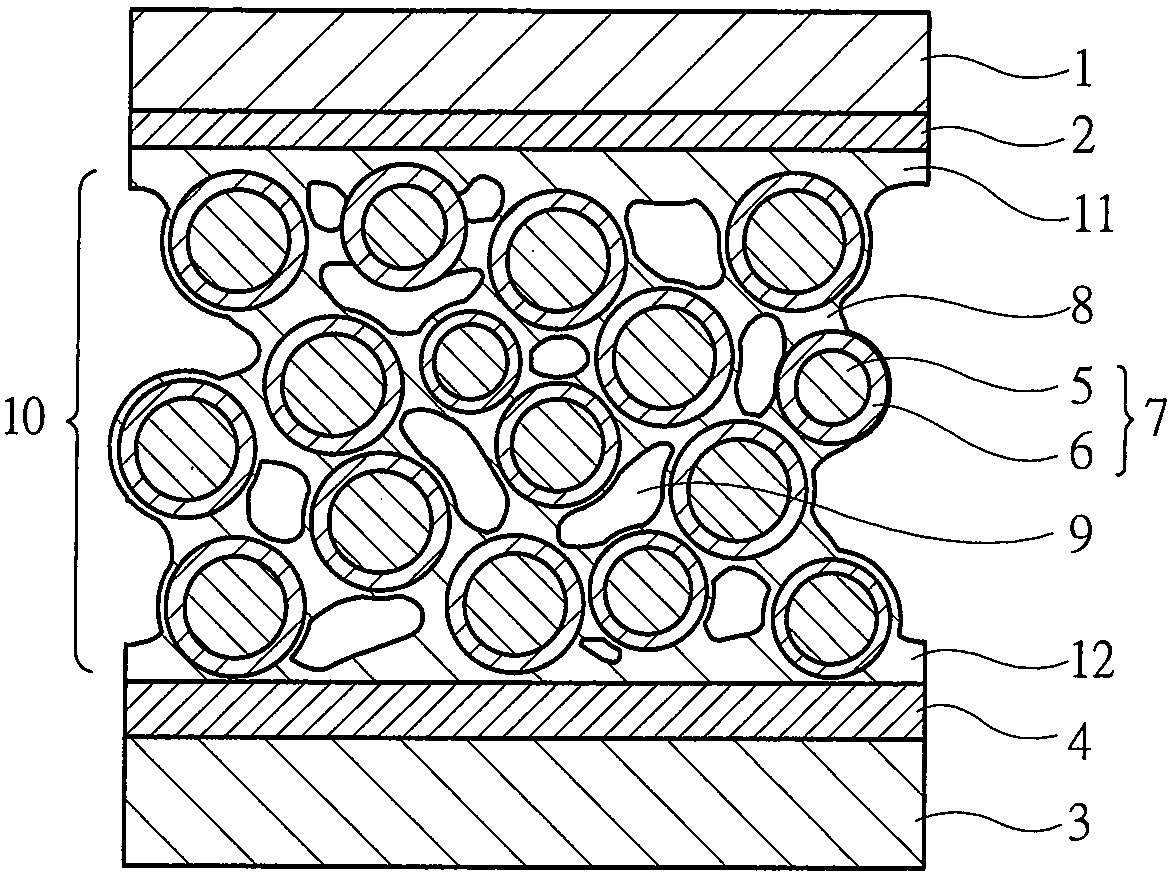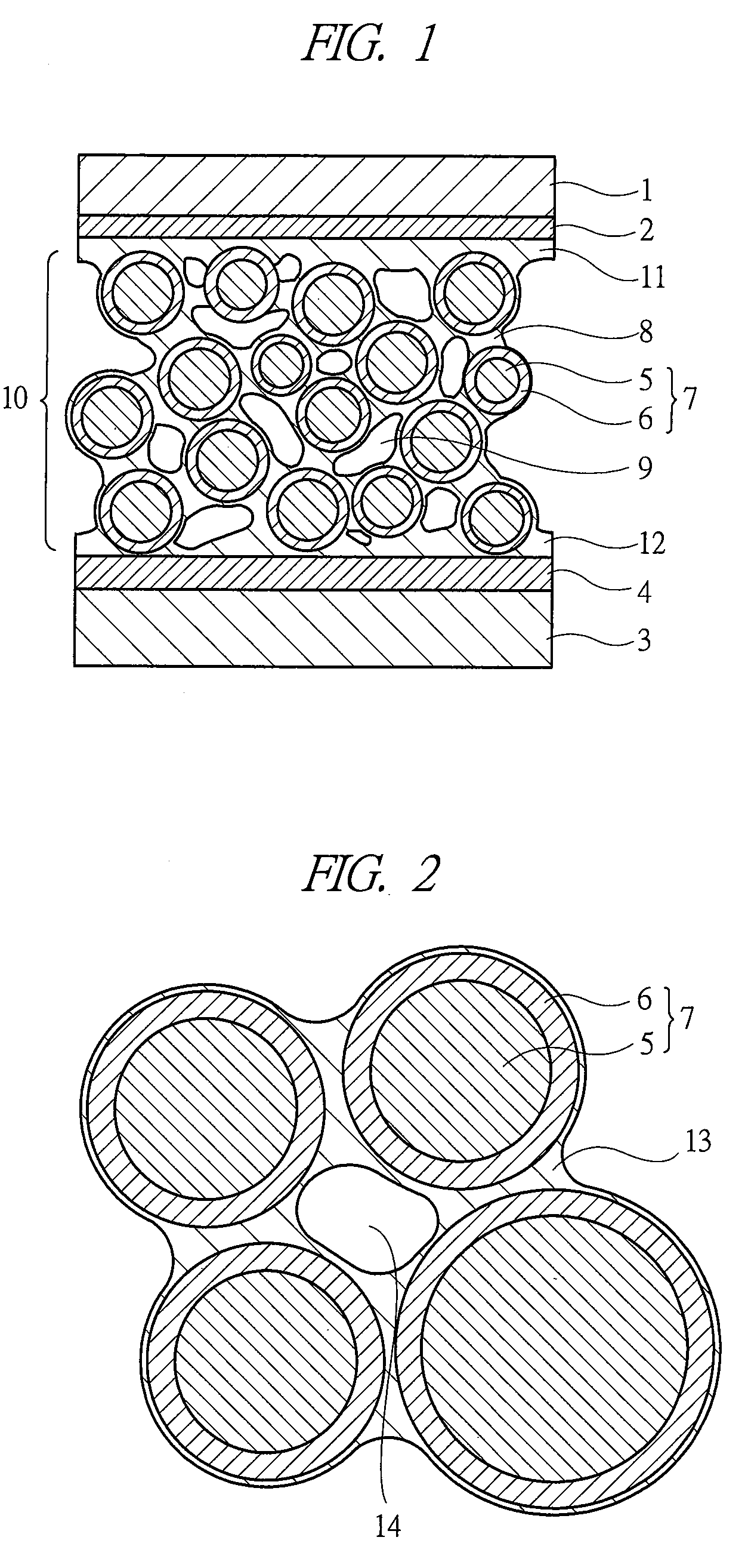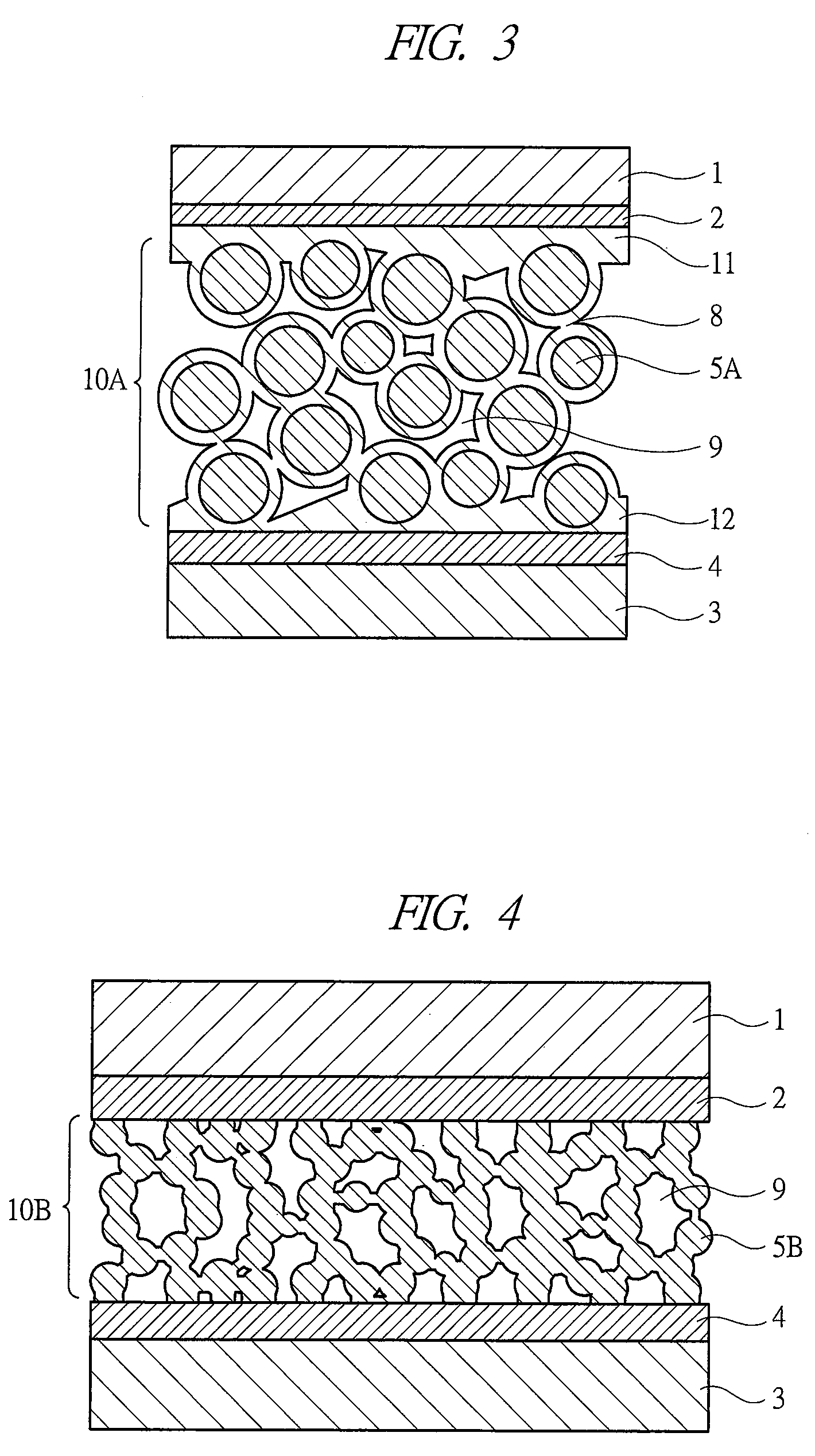Semiconductor apparatus, manufacturing method of semiconductor apparatus, and joint material
- Summary
- Abstract
- Description
- Claims
- Application Information
AI Technical Summary
Benefits of technology
Problems solved by technology
Method used
Image
Examples
first embodiment
[0049]FIG. 1 shows an example of a cross-sectional structure of a die bonding portion in a semiconductor apparatus according to the first embodiment.
[0050]A chip (semiconductor part) 1 is formed of an Si (silicon) substrate about 4 mm and 5 mm on a side and about 0.26 mm thick, and semiconductor elements (power transistor elements such as power MOSFETs) are formed in a direction vertical to a surface of the Si substrate.
[0051]A rear-surface electrode 2 is configured to have a multi-layered structure obtained by stacking an Al (aluminum) film, a Ti (titanium) film, an Ni (nickel) film and an Au (gold) film in this order from the side of the chip 1, and the Au film is the outermost film. Note that a V (vanadium) film may be used instead of the Al film.
[0052]A die pad (conductive member, second conductive member) 3 is formed of a lead frame made of Cu (copper) plated with Ni. Further, a plating film 4 made of Ag (silver) or Ni with a thickness of about 5 μm is formed on a surface of th...
second embodiment
[0059]FIG. 3 shows an example of a cross-sectional structure of a die bonding portion in a semiconductor apparatus according to the second embodiment.
[0060]In FIG. 3, the chip 1, the rear-surface electrode 2, the die pad 3 and the plating film 4 are the same as those described in the first embodiment with reference to FIG. 1.
[0061]The chip 1 and the die pad 3 are electrically connected by single metal powders 5A and the adhesive layers 8, 11 and 12, and the joint layer (bonding layer) 10A between the chip 1 and the die pad 3 is formed of the single metal powders 5A, the adhesive layers 8, 11 and 12, and the holes 9. The single metal powders 5A are made of Cu single metal powders with a diameter of about 10 μm to 100 μm fabricated by the atomize method, and the surface thereof is coated with precipitated and fused Ag. In the assembly process of a semiconductor apparatus, when the heat treatment is performed in an atmosphere, the surface of Cu is oxidized and an oxide film is formed, ...
third embodiment
[0063]FIG. 4 shows an example of a cross-sectional structure of a die bonding portion in a semiconductor apparatus according to the third embodiment.
[0064]In FIG. 4, the chip 1, the rear-surface electrode 2, the die pad 3 and the plating film 4 are the same as those described in the first embodiment with reference to FIG. 1.
[0065]In the third embodiment, silver metal powders 5B are used for the joint material (joint layer 10B). Therefore, the internal structure of the joint layer (bonding layer) 10B appears similar to that of an adhesive layer made of Ag with many gaps.
[0066]According to the third embodiment, the chip 1 and the die pad 3 are bonded by only mechanically flexible Ag, and the inside of the joint layer 10B is formed to have a porous structure (holes 9 are formed) and is easily deformed. Therefore, the thermal stress load applied to the chip 1 can be reduced, and the thickness of the joint layer 10B can be determined by the thickness at the time when the chip 1 is mounte...
PUM
| Property | Measurement | Unit |
|---|---|---|
| Temperature | aaaaa | aaaaa |
| Temperature | aaaaa | aaaaa |
| Temperature | aaaaa | aaaaa |
Abstract
Description
Claims
Application Information
 Login to View More
Login to View More - R&D
- Intellectual Property
- Life Sciences
- Materials
- Tech Scout
- Unparalleled Data Quality
- Higher Quality Content
- 60% Fewer Hallucinations
Browse by: Latest US Patents, China's latest patents, Technical Efficacy Thesaurus, Application Domain, Technology Topic, Popular Technical Reports.
© 2025 PatSnap. All rights reserved.Legal|Privacy policy|Modern Slavery Act Transparency Statement|Sitemap|About US| Contact US: help@patsnap.com



